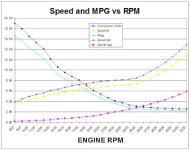A
Anonymous
Guest
OK brats, not trying to start an arguement here, i"ve never owned a boat with a diesel, but i have been operating heavy equiptment since i was old enough to reach the pedals & levers, and can personaly gaurentee you that all that engine RPM talk is mostly a bunch of bull. i own & have owned many different diesel engines with THOUSANDS of hours on em , most machines i "ve bought used with well over 1000 hrs on them . many times in winter i"ll start up say /dozer / excavator/back hoe......... and one may idle for 6 or 7 hrs & get used for 1 or 2 per day and they run fine , a good yanmar example is a small john deere tractor loader i use all the time i"ts small & gets used mostly to squeze in tight spots like in foundations....etc. because it"s only a yan 30 (low power) it basically has lived life at 2 rpms wide open or idle and has done so for well over a grand and still will for many more hrs of abuse ,. Most of the big horse power stuff sits on the pump limit (governer) -(wot) whatever you want to call it or chugs along a bit above idle for days , weeks ,months on end / run just fine. yea you have to clean - em out - rev -em - up get -em hot once in a while - maintain -em . but its kinda funny to hear everyone talkin about such & such a rpm so& so hrs bla bla bla turbos factory manual says ........ ha ha ha..... trust me them diesels will take more abuse than any other elect. gas. or plastic junk we have on our boats. THATAWAY - i dont think they did all that much to squeze new 150 into the 25 mabey motor mounts , doubt they changed shaft, rudder, or probably even the prop for that matter, but who knows , they could do same for 21........ john


